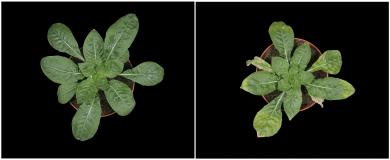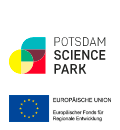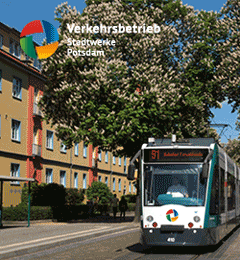Sun light heats up plant evolution - Climate change and ice ages bestow new species on evening primroses
How do different species actually develop? So far, we know that in many living organisms there is an incompatibility between the actual genetic material in the cell nucleus and the genetic material of the individual cell organelles, the powerhouse of the cell. This incompatibility prevents different species from mixing, but little is known about the exact mechanisms behind it. Researchers led by Stephan Greiner at the Max Planck Institute of Molecular Plant Physiology (MPI-MP) in Potsdam are searching for the reasons that prevent even closely related species from interbreeding, even when they grow in close proximity to each other. They studied the model plant evening primrose and were able to show that photosynthesis itself, the process by which plants obtain biomass from sunlight, carbon dioxide and water, plays a major role in speciation. Their results have now been published in Plant Cell.
Plants are using very different strategies for reproduction. While some favor to keep to themselves, using self-fertilization or vegetative reproduction, while others rely on cross-pollination and thus mix their genetic material with a partner. However, this mixing does not work without limits. Even closely related species are often unable to reproduce. This leads to incompatibility.
Often incompatibility is caused by the genes. Every single cell stores the genetic material in the cell nucleus. In addition, the organelles, such as chloroplasts and mitochondria, store their own genetic material, albeit many times smaller. These different genomes need to fit together. If this is not the case, the partners cannot cross.
Evening primroses are plants that are not very strict about species barriers. That’s why it is often used as a model organism to study the interactions between nuclear and chloroplast genomes. Danijela Kozul, one of the first authors of the study, explains: "Evening primroses have three different nuclear genomes (AA, BB, CC) and the resulting corresponding mixtures (AB, AC, BC), which are combined with five chloroplast genome variants (I-V). The compatibility between the 30 possible variants varies greatly." If these variants do not match, the offspring are usually viable but show what is known as Plastome Genome Incompatibility (PGI). This becomes visible by bleached leaves, because the chloroplasts, in which photosynthesis takes place, are disturbed.
Stephan Greiner's team concludes: The feature that contributes to speciation is photosynthesis. "Photosynthesis is subjected to strong selection under changing environmental conditions," explains Arkadiusz Zupok, also lead authors of the study. "Already in the Pleistocene, the different genome variants have formed due to climate change and ice ages. Only a few natural variants prevailed, all other genome combinations show plastome-genome incompatibility with bleached leaves."
In their study, the researchers focused on one incompatible hybrid of the evening primrose in more detail, which showed yellow-green leaves under increased light conditions. As the cause of incompatibility, they identified a light-dependent misregulation of certain chloroplast genes. Normally, adapted plants would increase their chlorophyll content and additionally form more protective components of the photosystem. The hybrid cannot do either.
"We were able to show that adaptation to high light is mediated by the chloroplast genome," explains Zupok. "In our study, we compared 46 chloroplast genomes of different naturally occurring evening primrose species. If these are combined with the nucleus of the wrong evening primrose species, they cannot adapt to increased light. With the right nucleus, however, adaptation takes place, but even there are differences. Depending on the chloroplast genome, the respective evening primrose is well or poorly adapted to high light." "This opens up completely new approaches for breeding," Stephan Greiner continues. "Until now, the chloroplast genome had not been considered as an important factor in plant breeding. But there seem to be chloroplasts that help plants grow better under certain environmental conditions."
In the next step of their investigation, the researchers want to take a closer look at the nuclear genome. They have also already identified possible molecules, that could be involved - so-called sigma factors. These proteins are necessary for the start of the reading process of a gene, allowing formation of the corresponding product that is transcribed by a gene. They regulate transcription, i.e. the reading process of genes in the chloroplast, in response to light quality and quantity. There are also indications from other plants that speciation via sigma factors could be a general principle of plant evolution. Given this, the researchers want to test further to what extent these sigma factors could be used in plant breeding.
Contact
Dr. Stephan Greiner
Max Planck Institute of Molecular Plant Physiology
Tel. +49 331/567 8349
Greiner@mpimp-golm.mpg.de
Dr. Ulrike Glaubitz
Public Relation Officer
Max Planck Institute of Molecular Plant Physiology
Tel. +49 331/567 8275
Glaubitz@mpimp-golm.mpg.de
http://www.mpimp-golm.mpg.de
Original Publication
Arkadiusz Zupok, Danijela Kozul, Mark Aurel Schöttler, Julia Niehörster, Frauke Garbsch, Karsten Liere, Axel Fischer, Reimo Zoschke, Irina Malinova, Ralph Bock, Stephan Greiner
A photosynthesis operon in the chloroplast genome drives speciation in evening primroses
Plant Cell, 28.5.2021, doi: https://doi.org/10.1093/plcell/koab155












